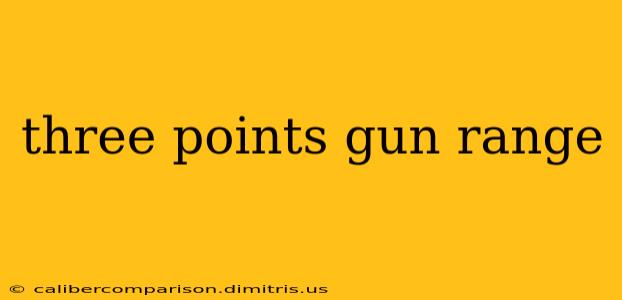Choosing a firearm and hitting the range is an exciting step for many, but maximizing your time and improving your skills requires understanding fundamentals. This article focuses on the critical importance of a three-point stance in shooting, breaking down its components, benefits, and how to perfect it for improved accuracy and safety. Whether you're a seasoned shooter or just beginning, mastering the three-point stance is paramount to your shooting journey.
Understanding the Three-Point Stance in Shooting
The three-point stance, a cornerstone of marksmanship, involves establishing stable contact between your body and the firearm, using three points of contact to ensure a consistent and repeatable shooting platform. These points are:
- Shoulder: Your shooting shoulder provides the primary support for the weapon, creating a stable base. Proper shoulder positioning ensures consistent recoil management and reduces muzzle rise.
- Supporting Hand: Your supporting hand (generally your non-dominant hand) grips the firearm firmly, providing secondary support and control. A strong grip helps to minimize movement and maintain accuracy.
- Feet: Your feet provide the foundation for the entire stance. A balanced and stable foot placement is crucial for maintaining your posture and preventing sway. This isn't just about balance; it's about a grounded, controlled position that supports your upper body.
Benefits of Mastering the Three-Point Stance
Adopting a proper three-point stance offers numerous advantages:
- Enhanced Accuracy: By minimizing movement and providing consistent support, this stance significantly improves shot grouping and accuracy. This is particularly important for longer-range shooting.
- Improved Recoil Management: A solid stance helps to absorb and control recoil, enabling faster follow-up shots and reducing muzzle climb. This is essential for both pistols and rifles.
- Increased Stability: A stable stance translates directly to better accuracy. Even slight shifts in your body can drastically affect your aim.
- Greater Control: The combined support of your shoulder, supporting hand, and feet provides greater control over the firearm, especially during longer shooting sessions.
- Enhanced Safety: By maintaining a stable and controlled position, the three-point stance reduces the risk of accidental discharges and minimizes potential for injury.
Refining Your Three-Point Stance: A Step-by-Step Guide
Perfecting your three-point stance is an iterative process that requires practice. Here's a step-by-step guide:
-
Foot Placement: Begin with a comfortable and balanced stance, ensuring your feet are shoulder-width apart and your weight is evenly distributed. Adjust your stance based on your shooting position (sitting, kneeling, standing).
-
Shoulder Positioning: Mount the firearm, ensuring your shoulder is firmly against the stock (for rifles and shotguns) or the firearm's grip (for handguns). A proper shoulder mount helps maintain consistent cheek weld and eye alignment.
-
Grip: Maintain a firm but not tense grip with both hands. Experiment to find the grip that works best for you while ensuring stability and control.
-
Posture: Keep your back straight, avoiding hunching or slouching. This helps to maintain a stable shooting platform and prevents fatigue.
-
Breathing: Control your breathing. Take a deep breath, exhale partially, and hold your breath while you aim and fire. This will help minimize movement.
-
Follow Through: After firing, maintain your stance and follow through with your shot. Don't move until the recoil has completely subsided.
Beyond the Basics: Adapting the Three-Point Stance
While the three-point stance provides a solid foundation, it's essential to remember that it's not a one-size-fits-all approach. Different shooting situations might necessitate adjustments. Consider factors like the type of firearm, the range, your physical characteristics, and the environment when adapting your stance.
Remember always to prioritize safety. Never handle firearms without proper training and supervision. Regular practice and mindful application of these techniques will significantly enhance your shooting accuracy, control, and safety.

